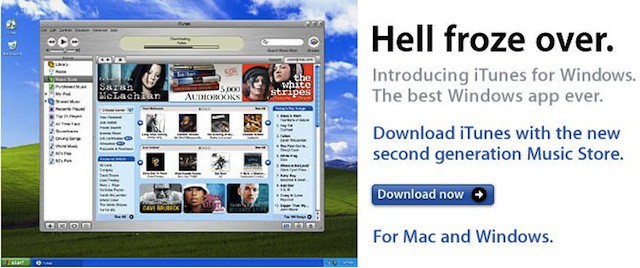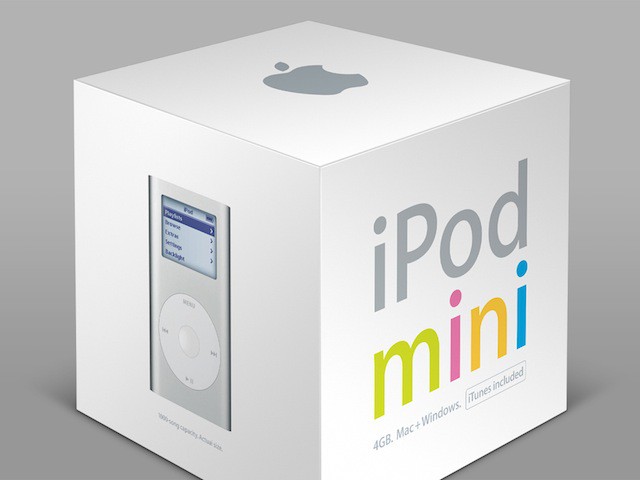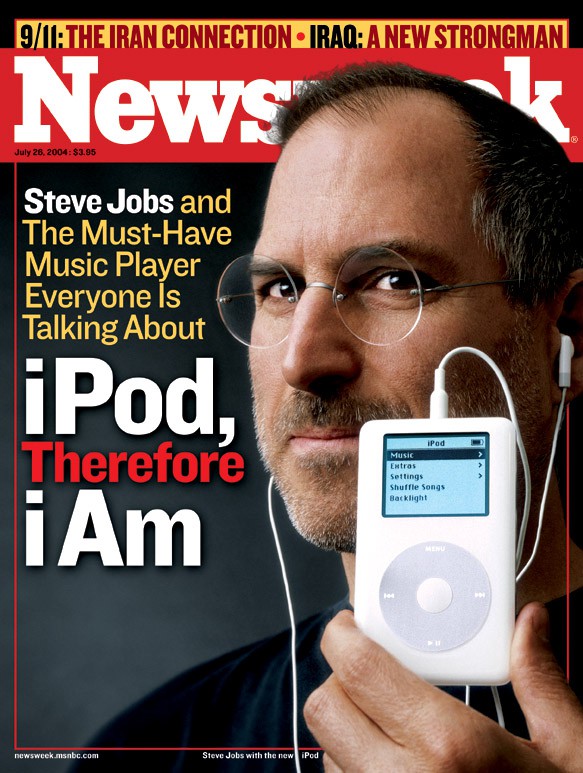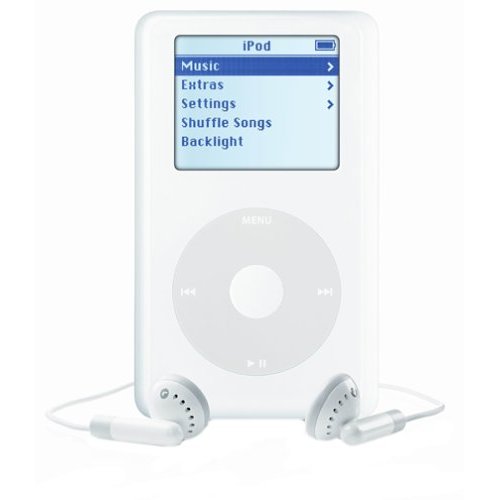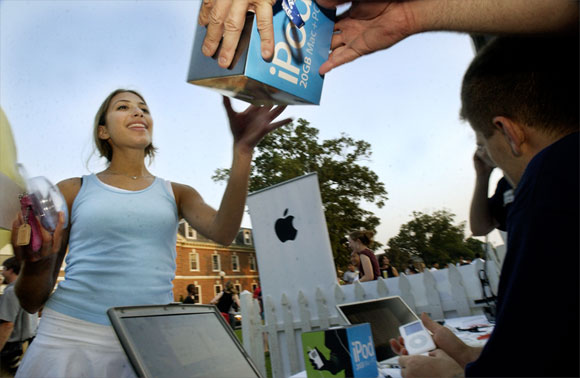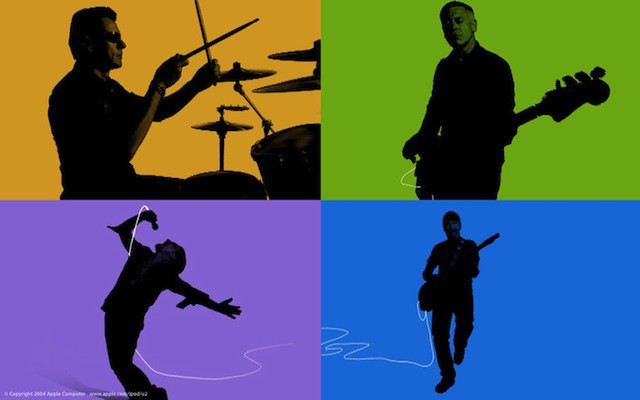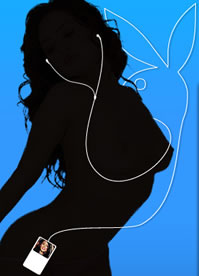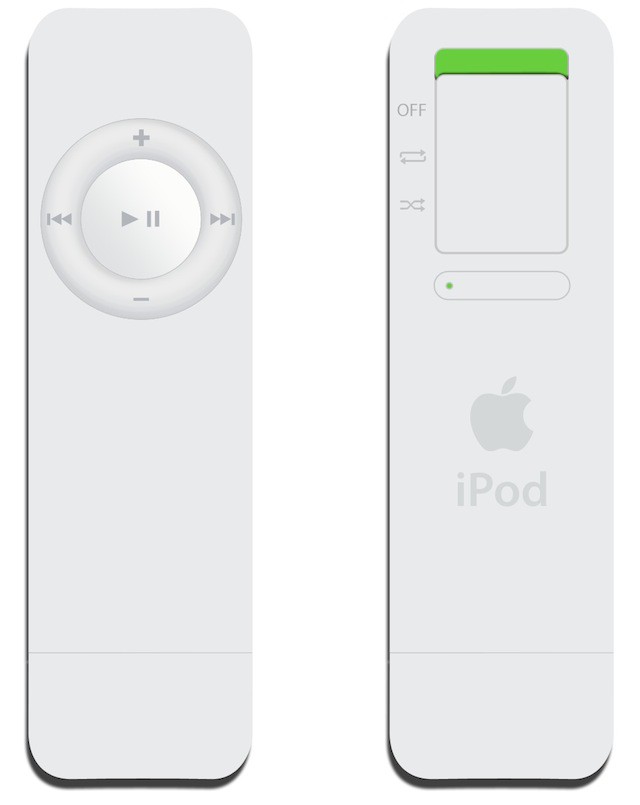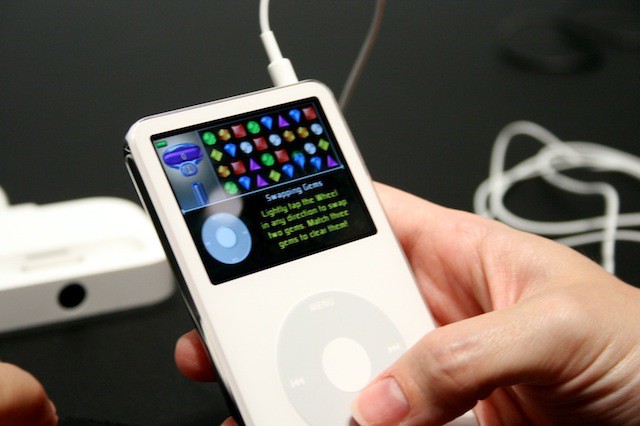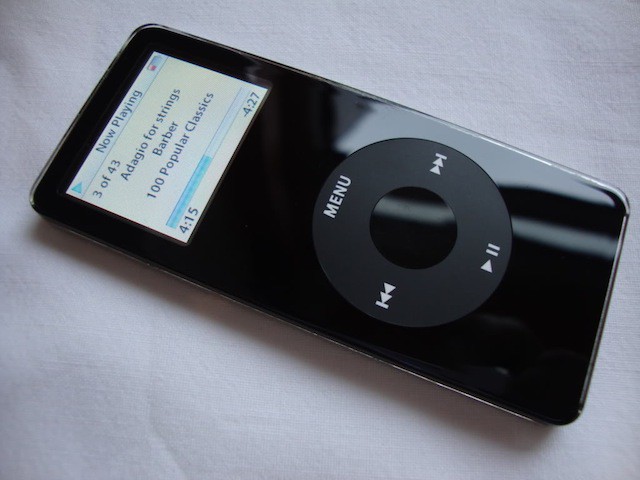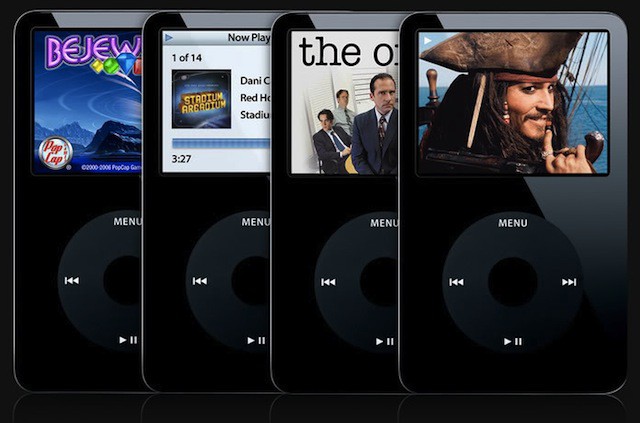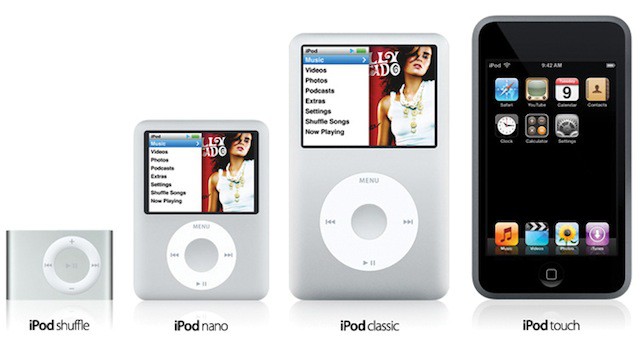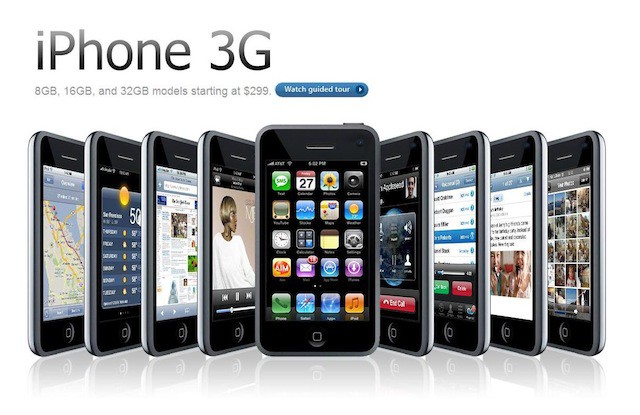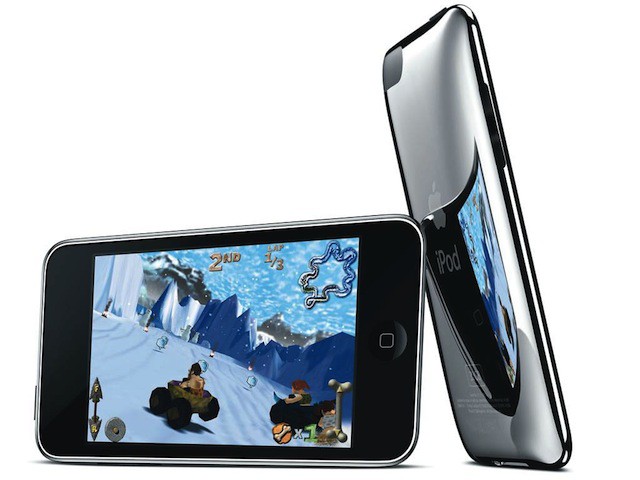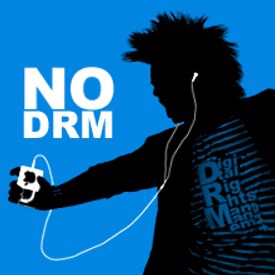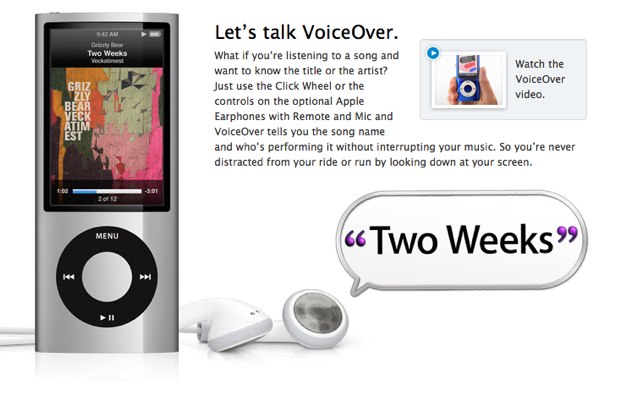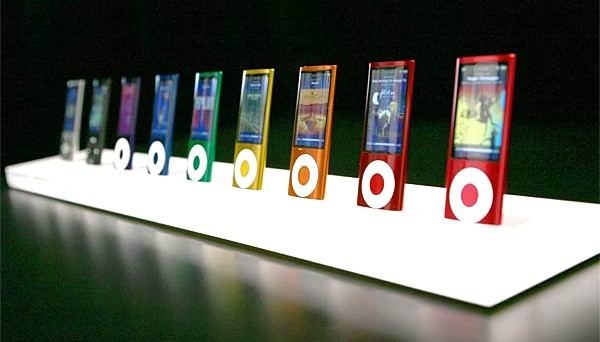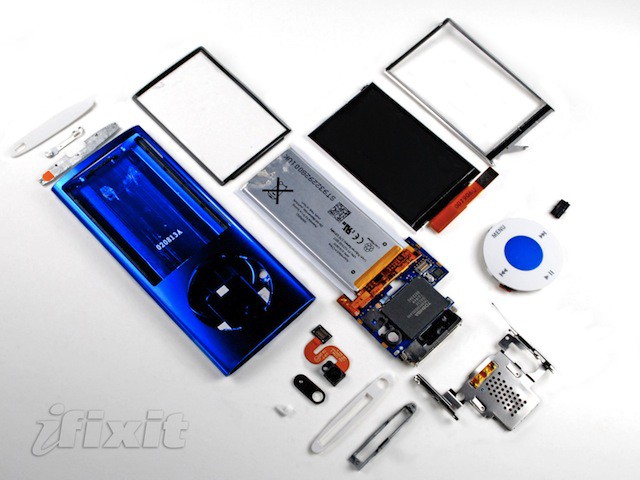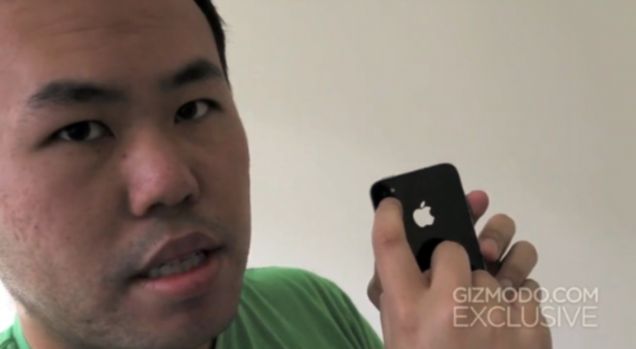Editor’s note: We originally published this illustrated history of the iPod to celebrate the device’s 10th anniversary on Oct. 22, 2011 (and updated it a decade later). We republished it on May 10, 2022, when Apple finally pulled the plug on the iPod.
 The iPod grew out of Steve Jobs’ digital hub strategy. Life was going digital. People were plugging all kinds of devices into their computers: digital cameras, camcorders, MP3 players.
The iPod grew out of Steve Jobs’ digital hub strategy. Life was going digital. People were plugging all kinds of devices into their computers: digital cameras, camcorders, MP3 players.
The computer was the central device, the “digital hub,” that could be used to edit photos and movies or manage a large music library. Jobs tasked Apple’s programmers with making software for editing photos, movies and managing digital music. While they were doing this, they discovered that all the early MP3 players were horrible. Jobs asked his top hardware guy, Jon Rubinstein, to see if Apple could do better.
An Illustrated History of the iPod
Rubinstein spent a few weeks on the project but concluded the technology wasn’t yet there. Either it would be big and bulky, or the battery would suck, or it would have limited memory. He was just about to give up when he made a routine visit to Toshiba, one of Apple’s hard drive suppliers. At the end of a meeting, the Toshiba executives offhandedly showed him a new, 1.8-inch hard drive they had just prototyped. They didn’t know what to do with it. Rubinstein immediately recognized it as the key technology for the first iPod.

Rubinstein recruited engineer Tony Fadell to oversee the hardware. In less than seven months, Fadell’s team had a product ready to go. Apple marketing guru Phil Schiller suggested the scroll wheel after it became clear early on that users would need to navigate huge lists of songs. To speed things up, the iPod was assembled from off-the-shelf parts — a Toshiba hard drive, a Sony battery and chips from Texas Instruments.
The name “iPod” came from a freelance copywriter, Vinnie Chieco. As soon as he saw the pure white device, Chieco thought of Stanley Kubrick’s 2001: A Space Odyssey and the immortal line: “Open the pod bay doors, Hal.” Steve Jobs was talking a lot about the iMac and iLife, so adding the “i” prefix was a natural thing to do. Jobs initially rejected the iPod name, but later came around to it.
History of the iPod: The timeline
Two decades after its launch, the iPod’s influence on mobile devices — and Apple’s fortunes — continues to be felt. This timeline tracks the iPod’s development and evolution over the past 20 years.
2001
January 9: Apple releases its iTunes music jukebox software, which was based on a program called SoundJam MP, purchased by Apple in early 2000. Some critics complain that it does not come with a boatload of advanced features. However, it is nice, simple and makes digital music easy.
October 23: Only a month after 9/11, and in the midst of an anthrax terrorist scare, Jobs took the stage at Apple’s HQ to announce the first iPod. From the get-go, he harbored huge ambitions for the tiny gadget. He calls it a “breakthrough digital device.”
“Music is a part of everyone’s life,” Jobs said, “and because it’s a part of everyone’s life, it’s a very large target market all around the world. It knows no boundaries.”
The small white player has a 1,000-song capacity thanks to its 5GB hard drive, but costs $399.
Watch Jobs unveil the iPod:
The initial reaction from the public is not good. Most critics think the iPod costs too much and does too little. “All that hype for an MP3 player? Break-thru digital device?” said one commentor on MacRumors forums. “The Reality Distiortion (sic) Field™ is starting to warp Steve’s mind if he thinks for one second that this thing is gonna take off.”
Others riff on the name iPod: “Idiots Price Our Devices”; “I prefer Owning Disks”; “I Prefer Other Devices.”
2002
July 17: Apple releases the second-generation iPod in 10GB and 20GB capacities. Similar in appearance to the previous model, this version features a touch-sensitive wheel instead of the prior mechanical one. It also comes with a redesigned hold switch and a cover over its FireWire port. The iPod becomes compatible with Windows, too, thanks to Musicmatch software.
September: In France, the iPod is briefly taken off the market when authorities say it is too loud and could damage listeners’ ears. Under French law, portable devices are limited to 100 decibels. The iPod’s software is quickly updated to reduce the volume. Users in other European countries are not happy.
December: Apple offers limited-edition iPods with signatures of Madonna, Tony Hawk, Beck or No Doubt laser-engraved on the back. These become the most expensive iPods yet: the top-of-the-line model costs $548.
Number of iPods sold through 2002: 600,000
2003
April 28: Apple releases the third-generation iPod, which moves the control buttons to a new row of touch-sensitive buttons under the screen. This model introduces the USB dock connector for syncing. Apple also introduces iTunes Music Store, which opens with 200,000 songs available for 99 cents each. At a time of rampant music piracy, observers see the move as ballsy. Who would pay for music when it is available for free? But Jobs argued that simplicity and ease of use would trump stealing. Most consumers want to do the right thing, he said.
The 3G iPod marks the most important change in the iPod’s early history: Apple adds USB alongside FireWire. This makes the iPod compatible with vast numbers of Windows PCs. Sales of Apple’s music player start to explode.
May: Oprah names the iPod one of her “Favorite Things” and gives everyone in her show’s 350-member live audience a 15GB iPod worth $399.
June: One millionth iPod sold.
Summer: Apple’s iPod ads featuring silhouettes of people listening to music become ubiquitous. The iPod’s white earbuds turn out to be a marketing master stroke. They advertise a device hidden away in a bag or pocket. The design was just a lucky accident, though. Apple’s head designer, Jony Ive, said the company made the earbuds white simply because the iPod is white. But Apple soon realized its good fortune, emphasizing the white earbuds in its iconic silhouette ads.
September: iTunes downloads top 10 million songs.
September: Apple Corps, which holds the rights to The Beatles’ catalog, sues Apple for violating a trademark agreement. Apple Computer had agreed to stay out of the music business. But with 10 million songs sold in iTunes, Apple was becoming unambiguously involved. When the case came before the High Court in London, the judge considered disqualifying himself because he used an iPod. Apple’s lawyers argued that not even “a moron in a hurry” would mistake the two companies. The case was settled in 2007 — in favor of the computer company.
October: With the release of iTunes 4.1 comes compatibility with Windows 2000 and XP. iPod sales take off following this development. Jobs gets his friends in the music business, including U2’s Bono and The Rolling Stones’ Mick Jagger, to help launch the software. Apple takes out cheeky ads that say “Hell froze over.”
October: Dell launches its Digital Jukebox (DJ), which some herald as an “iPod killer” because of its lower price point.
November: The anti-iPod backlash reaches a crescendo with “iPod’s Dirty Little Secret,” a video by the Neistat brothers complaining about the iPod’s battery. The video goes viral and Apple starts an inexpensive battery-replacement program.
Watch “iPod’s Dirty Little Secret.”
December: iTunes song downloads top 25 million.
December: Canadian authorities drag the iPod into controversy about music piracy, levying a CDN$25 charge on every iPod to compensate artists whose music was being ripped off.
Number of iPods sold through 2003: 2 million
2004
January 6: Apple goes small with the “iPod mini.” The mini comes with 4GB of storage and in five colors. It features a new “click wheel” that combines the control buttons integrated into a solid-state, touch-sensitive scroll wheel.
February 1: Apple and Pepsi launch the biggest iTunes promotion yet. Publicized with splashy Super Bowl commercials, the two companies promise to give away 100 million free songs through iTunes.
February: Random shuffle inspires laudatory essays in cultural organs like The New Yorker, Wired and The Guardian. Professor Michael Bull says Shuffle is the signature feature of digital music, turning the iPod into an “Alladin’s Cave of aural surprises.”
March: After a string of muggings and robberies, the West Midlands Police, one of the U.K.’s largest police forces, warns iPod users to stop using white earbuds.
June: BMW debuts the first car entertainment system with built-in iPod integration. Within a couple of years, 90% of new cars will offer this feature.
June: In a big cover story, Newsweek declares that America is “iPod Nation.”
July: iTunes downloads top 100 million songs. The person who purchased the 100 millionth song, Kevin Britten of Hays, Kansas, gets a congratulatory phone call from Steve Jobs.
July 19: Apple releases the fourth-generation iPod, with the new click-wheel controls from the iPod mini. Available in 20GB and 40GB capacities.
Fall: Duke University provides iPods to all incoming freshmen.
August: The classic first-person-shooter Doom, which geeks have tweaked to run on almost every computing device known to man, is finally ported to iPod. It’s a sign the iPod has finally gained nerd cred.

October: Microsoft CEO Steve Ballmer calls iPod users thieves because “the most common format of music on an iPod is ‘stolen.'” He soon apologizes.
October 26: Apple introduces iPod Photo, a premium iPod featuring a color screen and an updated user interface for viewing pictures. Apple also releases the iPod U2 Special Edition, a 30GB fourth-generation model with an all-black enclosure and red click wheel. On the back, the signatures of U2’s members are laser engraved. Several exclusive U2 videos come included on the iPod’s hard drive.
December: Playboy launches iBod, a set of saucy pictures optimized for the iPod photo. The galleries of PlayMates, Blondes and Voluptuous Vixens are dubbed the first “iPod porn.”
Number of iPods sold through 2004: 10 million
2005
January 11: Apple announces a new entry-level iPod, the iPod shuffle, using flash memory with 512MB and 1GB capacities. The device plugs directly into computers, thanks to onboard USB. Apple brags that it has sold a total of 10 million iPods, and rightly so. The massive popularity of the portable music player drives Apple to its highest earnings ever.
February 22: Apple releases the second-generation iPod mini, with updated colors and a longer battery life.
September: Apple rolls out a bunch of new iPod games through the iTunes Store.
September 7: Steve Jobs shocks the gadget world when he kills off the very successful iPod mini in favor of the iPod nano. The nano includes a color screen for viewing photos and comes in black or white, with 2GB and 4GB capacities. Later, the company adds a cheaper 1GB version to the line. Initially, some consider Jobs’ move reckless and crazy. Later, it was seen as pure Apple: Jobs was his own fiercest competitor.
October 12: Apple launches the fifth-generation iPod, featuring another complete redesign. The new look brings a slimmer profile and larger screen for playing videos. The device comes in black or white.
December: The White House reveals that even President George Bush owns an iPod. He discusses his playlist in this video:
Number of iPods sold through 2005: 42 million
2006
February: iTunes sells its 1 billionth song.
Summer: iPod-inspired cakes reach a tipping point on the Web.
Fall: Everyone and their kids dress up as an iPod for Halloween.

September 12: Apple unveils the second-generation iPod nano. It features an anodized aluminum casing available in six colors, a design that hearkened back to the iPod mini. Alongside the new nano comes the second-generation iPod shuffle, which also gets a new anodized aluminum body, as well as a clip on the back.
November: Apple teams up with a slew of airlines to offer the “first seamless integration” between iPods and in-flight entertainment systems.
Number of iPods sold through 2006: 88 million
2007
January 9: Steve Jobs delivers the keynote address at the Macworld Conference and announces three new products: “a widescreen iPod with touch controls,” a “revolutionary mobile phone” and “a breakthrough Internet communicator.” To uproarious applause, he reveals that these three products are actually a single device: the long-awaited and oft-rumored iPhone. Though Apple won’t release the iPhone until June, Jobs demonstrates — among the smartphone’s many other features — a built-in iPod media player application, featuring touch-controlled CoverFlow.
Watch Jobs’ greatest performance, the introduction of the iPhone.
January: A Spoof iPod ad featuring Microsoft CEO Steve Ballmer doing the “Monkey Boy” dance becomes a smash viral hit:
April: Apple sells its 100 millionth iPod. Coming five-and-a-half years after the portable music player went on sale, the landmark event confirms the iPod as Apple’s most popular product of all time. Until the iPhone arrives a couple months later, that is!
June 29: Apple releases the iPhone to long lines of eager shoppers. It initially comes in 4GB and 8GB sizes. But after just two months, Apple discontinues the 4GB model and drops the price of the 8GB model significantly, upsetting early adopters.
September 5: With the sixth generation of the original iPod comes a new name: “iPod classic.” Apple updates the iPod user interface again and adds an anodized aluminum front. It comes in black or silver in 80GB or 160GB sizes. A year later, Apple discontinues both capacities for a single 120GB model. Apple also unveils the third-generation iPod nano, which features a 2-inch, video-ready screen in a nearly square enclosure, and a smaller click wheel. Most importantly, Apple begins the process of making the classic iPod obsolete by introducing a new touchscreen iPod, the iPod touch. It brings the multi-touch, web access and media player features of the iPhone without the monthly cellular bill. Initially offered in 8GB and 16GB options, Apple adds a 32GB model to the line in February 2008.
Number of iPods sold through 2007: 141 million
2008
February 5: Apple adds a 16GB model to the iPhone line.
March: The iPod goes to space on the space shuttle Endeavor.
April: iTunes passes Walmart to become the top music vendor in the United States.
July 11: Apple releases the iPhone 3G, a new model with a curved plastic back and 3G cellular data capabilities. It comes in 8GB and 16G storage capacities.
September 9: Apple releases the fourth-generation iPod nano, reverting back to the original tall form factor and all-aluminum case. An included accelerometer allows horizontal use. Apple also updates the iPod touch, bringing a curved chrome back, hardware volume controls and a built-in speaker.
September: iPod connectivity is offered in more than 90% of new cars sold in the United States.
Number of iPods sold through 2008: 197 million
2009
February: Jobs writes an open letter on Apple.com title “Thoughts on Music.” In the piece, he announces that all songs in iTunes are DRM-free. It’s a watershed moment for the digital music industry. Instead of fighting customers with restrictive file-protection schemes, Jobs made things easier for the consumer over the rights-holders. It also serves as an acknowledgment that Jobs’ iTunes strategy worked: Simplicity and ease of use could compete with piracy.
March 11: Apple announces the third-generation iPod shuffle, featuring a tiny form factor and no hardware controls at all. Apple’s designers moved all controls to buttons on the headphone cable. New VoiceOver technology allows the iPod to speak the names of playlists, artists or tracks that the user selects.
April 1: On a state visit to the United Kingdom, President Barack Obama gives the queen of England an iPod.
April 27: All songs in the iTunes store become DRM-free as Apple adopts new pricing tiers at 79 cents, 99 cents and $1.29.
June 19: Apple releases an updated iPhone model, the iPhone 3GS. Nearly identical to its predecessor in appearance, it features upgraded internal components. The “S” stands for “speed.”
September: Apple replaces the 120GB iPod classic with the 160GB model.
September 9: With the fifth-generation iPod nano, Apple gives the model a polished outer case and onboard video camera — the first in an iPod. This model also receives a speaker, FM tuner and larger screen, and comes in 8GB or 16GB sizes. Apple also announces the third version of the iPod touch, which brings the iPhone 3GS’s upgraded processor and VoiceOver support.
Number of iPods sold through 2009: 250 million
2010
June 21: Apple releases the iPhone 4, featuring a flat, minimalist design and a metal band around the outer edge to serve as antennae. Even before Apple announces it, the iPhone 4 is steeped in controversy after an Apple engineer leaves a prototype in a bar and it falls into the hands of tech blog Gizmodo. After the release, users discover that holding the iPhone 4 in “the wrong way” can greatly diminish the cellular signal.
September 1: Multi-touch comes to the iPod nano with the sixth-generation model. In addition, Apple also brings the clip from the iPod shuffle but removes video, speakers and camera features. A fourth iteration of the iPod shuffle is also released, keeping the previous generation’s VoiceOver feature but bringing the media controls down from the headphones and back to the outside of the unit itself.
September: President Obama discusses his 2,000-song iPod playlist with Rolling Stone. Jay-Z dominates but it also includes Nas and Lil Wayne. “Music is still a great source of joy and occasional solace in the midst of what can be some difficult days,” Obama says.
September 9: Apple unveils the fourth-generation iPod touch, with an even thinner design and two cameras. One camera on the back captures HD video, while the second camera on the front brings FaceTime video-calling capabilities. Apple also packs in its A4 processor and a Retina Display.
November: After years of rumors, speculation and hope, The Beatles catalog finally comes to iTunes. Still no sign of Led Zeppelin or The Rolling Stones.
Number of iPods sold through September 1, 2010: 275 million
2011
October 4: Apple unveils an updated iPhone model dubbed the iPhone 4S, which features a faster processor and an innovative AI called Siri. The iPod touch also sees a minor upgrade.
By this time, the iPod is everywhere. Below, a female warrior of Southern Ethiopia’s Mursi tribe holds her AK-47 and iPod.

As of 2011, the iPod captures a 70% market share of MP3 players globally. The closest rival is SanDisk’s Sansa line.
Photo: Wikimedia
2012
September 12: Apple releases the seventh and final iteration of the iPod nano with 16GB of storage. Measuring only 5.4 mm thick (half its predecessor), Apple bills it as the “thinnest iPod ever.” For the first time, it features Apple’s new eight-pin dock connector, named Lightning. Apple also announces the fifth-generation iPod touch alongside the iPhone 5.
Number of iPods sold through 2012: 350 million
2013
Photo: Wikimedia
By the end of 2013, an astonishing 397,035,000 iPod units have been sold.
2014

A 20GB U2 Special Edition iPod Classic sells for $90,000 on eBay. Yeah, $90,000!
September: It’s the end of an era. Apple discontinues the iPod Classic on Sept. 9, 2014. The last model is the sixth-generation version. It becomes a victim of Apple’s own iPhone, which makes standalone MP3 players increasingly irrelevant.
2015
July: Apple refreshes the iPod nano, offering five new colors: gold, silver, blue, pink and space gray. They look far more subdued than the original seven jewel tones.
The company also releases the sixth-generation iPod touch, the first major update to the lineup in more than two and a half years.
2017

July: It’s the end of the line for two of the most popular iPods. Apple pulls the iPod nano and iPod shuffle from its website on July 27, discontinuing both models.
The iPod touch is the the last iPod standing.
2018

Architect James Law designs an iPod-shaped luxury apartment building in Dubai called the Pad Tower.
2019

January: While the iPod was for several years a cash cow for Apple, the Apple Watch is now a much bigger business than the iPod ever was.

May: Apple rolls out the seventh-generation iPod touch, which promises to be its fastest yet. Powered by a speedy A10 Fusion processor, it’s built for gaming, group FaceTime and immersive AR experiences on the go. It’s also affordable, with prices starting at just $199. The only problem is — it looks just like the old iPod touch.
An original iPod still sealed in its packaging hits eBay for an eye-popping $19,995.
2020

Screenshot: Bleacher Report/Twitter
January: Soccer star Cristiano Ronaldo is worth roughly $450 million. But when he listens to music, he’s fine with an inexpensive iPod shuffle.
October 2: Once the crown jewel in Apple’s treasure chest, the iPod continues its slow march to the end. The final generation iPod nano moves to Apple’s “vintage” list.
2021
October 18: The main menu bar on Apple’s online store changes from the category “Music” (which included the section “iPod touch”) to the category “AirPods.” The move indicates that the little earbuds are now more important than the dedicated music player. Apple continues to sell the iPod touch, but customers must search to find it.
The iPod touch also disappears from the official list of devices compatible with Apple Music, foreshadowing the inevitable discontinuation of the last iPod still available.
For the iPod, the end really is nigh.
2022
May 10: Apple officially pulls the plug on the iPod, marking the end of an era. The iPod touch, the last remaining player in the product line, will remain on sale until Apple sells out its remaining stock.
Still, Cupertino says the iPod’s revolutionary DNA can be found across Apple’s product lineup.
“Music has always been part of our core at Apple, and bringing it to hundreds of millions of users in the way iPod did impacted more than just the music industry — it also redefined how music is discovered, listened to, and shared,” said Greg Joswiak, Apple’s senior vice president of worldwide marketing. “Today, the spirit of iPod lives on. We’ve integrated an incredible music experience across all of our products, from the iPhone to the Apple Watch to HomePod mini, and across Mac, iPad, and Apple TV. And Apple Music delivers industry-leading sound quality with support for spatial audio — there’s no better way to enjoy, discover, and experience music.”
Customers can purchase iPod touch from Apple’s website, at Apple Store locations and from Apple Authorized Resellers “while supplies last,” the company said.
![An illustrated history of the iPod and its massive impact [Updated] Steve Jobs on the cover of NewsWeek](https://www.cultofmac.com/wp-content/uploads/2016/10/Steve_Jobs_NewsWeek_iPod-1172x1536.jpeg)
